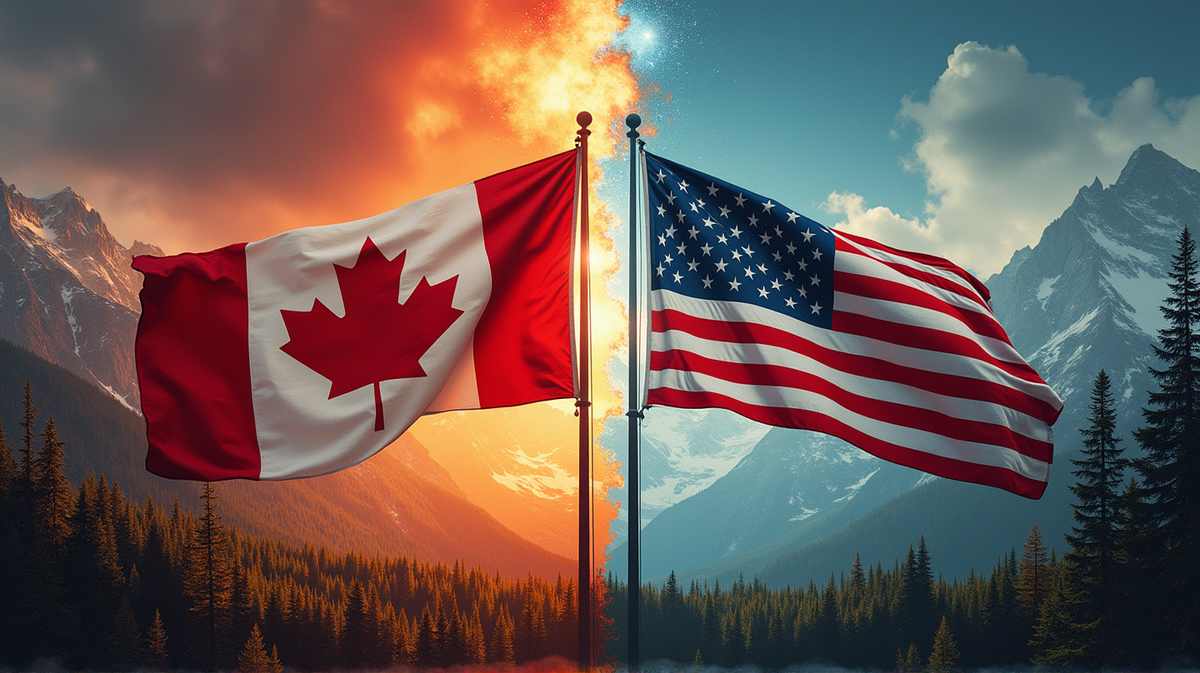Trump-Canada Trade Tensions of 2025: Strategic Insights for Savvy Investors
Explore resilient strategies and opportunities amid heightened Trump-Canada trade tensions hitting key sectors with tariffs and retaliatory measures.

The Tremors of Trade Tensions
In 2025, the trade landscape between the United States and Canada is marked by escalating tensions under the Trump administration. With a potent mix of tariffs and retaliatory measures, industries across manufacturing, agriculture, and energy encounter a turbulent environment. Navigating these choppy waters requires insightful strategies and resilient investment tactics to sidestep sector-specific pitfalls while uncovering promising opportunities.
Manufacturing Under Pressure
The manufacturing sector finds itself at the epicenter of the tariff tempest. U.S.-imposed tariffs on Canadian steel and aluminum have severely strained production costs and supply chains, especially for industries like automobiles and construction. Canadian aluminum exports to the U.S., once a flourishing $13 billion industry, now bear the weight of a 10% tariff. Investors who look beyond conventional North American suppliers and tap into markets like India and Brazil, as exemplified by firms such as Nucor Corporation and Alcoa Corporation, can find solace in diversified sourcing.
Agriculture’s Retaliatory Repercussions
The agricultural domain does not escape unscathed. Canada’s retort with tariffs on American bourbon, pork, and dairy has been a bitter pill for U.S. farmers, potentially costing the industry $5 billion a year. Yet, opportunities abound for those eyeing new markets. Cargill and Archer Daniels Midland are pivoting to India and Vietnam, regions where demand for quality agricultural products remains strong, providing a buffer against North American market volatility.
Energy Sector’s Cross-Border Challenges
Energy trades grapple with higher tariffs on infrastructure components and temporary restrictions on cross-border energy exchanges. The imposition of a 25% surcharge on U.S. electricity by Ontario, though paused, has spotlighted vulnerabilities. To cushion against these geopolitical forces, investing in companies like NextEra Energy and Enphase Energy which project robust renewable ventures within the U.S., presents a viable path for forward-thinking investors.
Resilient Strategies for Investors
Amid the flux, investors should prioritize companies scouting innovative paths:
- Diversified Sourcing: Giants like Apple and Samsung enhance resilience by shifting operations to India and Vietnam.
- Nearshoring: Pioneers like Tesla navigate the storm by harnessing the economic advantages under USMCA.
- Tech-Driven Insights: Dell Technologies and HP Inc. lead with predictive analytics, curbing cross-border logistics challenges.
Conclusion
The Trump-Canada trade turbulence of 2025 illustrates the delicate nature of modern supply chains. Nevertheless, it highlights avenues for astute investors who espouse adaptability and foresight. Leaning on firms with diversified sourcing, nearshoring prowess, and technological foresight ensures not just survival but thriving through challenging times. In this era, resilience isn’t merely a strategy; it’s an investment necessity.
According to AInvest, embracing innovative strategies is imperative to unlock value in an era fraught with uncertainties.